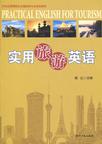实用旅游英语
出版时间:2010-5 出版社:知识产权出版社 作者:杨红 编 页数:284
前言
21世纪的中国将成为世界旅游经济强国。2009年11月,国务院出台《关于加快发展旅游业的意见》,提出把旅游业培育成我国战略性支柱产业,积极发展入境旅游,有序发展出境旅游;加强旅游从业人员素质建设,加强旅游从业人员培训。2009年12月,国务院作出了《关于推进海南国际旅游岛建设发展的若干意见》的重大战略决策,要把海南打造成世界一流的海岛休闲旅游度假目的地。这意味着机场、酒店、旅游景点、旅行社及各旅游服务、管理机构,需要大量的实用型旅游外语人才。而旅游英语是培育旅游外语人才的必要条件,一本实用性和针对性强的旅游英语教材,对于旅游外语人才的培养至关重要。作者自2005年开始,对20世纪90年代以来的国内旅游英语教材进行整理、读阅、分析、归纳、总结。此外,从2007年开始,走访海南各旅游社、酒店、景区景点等旅游服务机构,展开为期三年的旅游市场调研,并通过对旅游行政官员、导游等旅游服务人员的访谈,多方面了解社会对旅游外语人才的需求。从中外几十种书刊以及生活中选取素材,五年后完成了这本实用性、针对性和趣味性强的旅游英语教材的编写,这是一套富有生命力的教材。本教材由旅游手续、旅游种类、旅游胜地、旅游要素、旅游法制五章组成,共19个单元,每个单元分为六个部分,即Warm up、Vocabularies、Conversation、Pas-sage、Integrated Exercises of Skills Development、Self Study。本教材的培养目标:1.培养学生在旅游环境下实际使用英语进行涉外交际的能力。课文中warm up、Vocabularies、Conversation三个部分的内容与年轻人生活、思想、旅游大环境紧密相关,词汇丰富,题材广泛、话题有趣,有助于他们产生用英语进行口头交际、表达思想的强烈欲望。2.培养学生的阅读和翻译的能力,扩大旅游管理专业知识面。课文中Passage、Integrated Exercises of Skills Development两个部分,课文与习题相互依托,内容由浅至深,难易适度,精心设计,既满足不同英语基础学生的需求,也是对他们英语学习效果和旅游专业知识掌握程度的一种检验。
内容概要
本教材分为五章,共19个单元。第一章旅游手续,内容涉及办理护照和办理签证两个单元;第二章旅游种类,包括历史人文游、自然奇观游和红色旅游三个单元;第三章旅游胜地,包括东北地区、华北地区、华东地区、华中地区、西北地区、西南地区、华南地区及港澳台七个单元;第四章旅游要素,包括吃一餐饮服务、住一宾馆服务、行一交通服务、游一旅游服务、娱一娱乐服务、购一购物服务六个单元;第五章旅游法制,内容涉及中外旅游法制一个单元。 每个单元分为六个部分,即Warm up、Vocabularies、Convezsattion、Passage、Integrated Exercises of Skills Development、Self study。为便于高等院校教师的授课和学生的学习以及酒店、机场、景区景点、旅行社、外事机构、公司、教育和旅游局等部门相关人员使用本书,在Passage模块上加注译文,并在Integrated Exerclses of Skills Development模块上加注了习题答案。
作者简介
杨红,语言学与经济学双专业硕士,就职于海南大学旅游学院。主要研究方向为应用语言学、旅游经济学、旅游人类学。
现为国际人类学与民族学联合会会员、加拿大研究会会员。2007年获得加拿大专项研究特别奖,2008年受到加拿大驻华大使馆的表彰,并得到海南省教育厅、海南省外事侨务办表扬及海南大学多次报道。任职期间,多次荣获海南大学旅游学院的教学先进表彰。
主要学术成就包括:出版著作及发表论文共计35本(篇),完成6个基金课题。其中,发表CSSCI核心期刊论文6篇。
书籍目录
Chapter One Preparation for Traveling第一章 旅游手续UNIT 1 Passport Applications办理护照 PART Ⅰ Warm up PART Ⅱ Vocabularies PART Ⅲ Conversation PART ⅣPassage PART Ⅴ Integrated Exercises of Skills Development PART Ⅵ Self StudyUNIT 2 Visa Affairs办理签证 PART Ⅰ Warm up PART Ⅱ Vocabularies PART Ⅲ Conversation PART Ⅳ Passage PART Ⅴ Integrated Exercises of Skills Development PART Ⅵ Self StudyChapter Two Categories of Tourism第二章 旅游种类UNIT 3 Historical&Cultural Relics Tour历史人文游 PART Ⅰ Warm up PART Ⅱ Vocabularies PART Ⅲ Conversation PART Ⅳ Passage PART Ⅴ Integrated Exercises of Skills Development PART Ⅵ Self StudyUNIT 4 Natural Wonders Tour自然奇观游 PART Ⅰ Warm up PART Ⅱ Vocabularies PART Ⅲ Conversation PART Ⅳ Passage PART Ⅴ Integrated Exercises of Skills Development PART Ⅵ Self StudyUNIT 5 Red Resorts Tour红色旅游 PART Ⅰ Warm up PART Ⅱ Vocabularies PART Ⅲ Conversation PART Ⅳ Passage PART Ⅴ Integrated Exercises of Skills Development PART Ⅵ Self StudyChapter Three Tourist Attractions第三章 旅游胜地UNIT 6 Northeast China东北地区 PART Ⅰ Warm up PART Ⅱ Vocabularies PARTⅢ Conversation PART Ⅳ Passage PART Ⅴ Integrated Exercises of Skills Development PART Ⅵ Self StudyUNIT 7 North China华北地区 PART Ⅰ Warm up PART Ⅱ Vocabularies PART Ⅲ Conversation PART ⅣPassage PART Ⅴ Integrated Exercises of Skills Development PART Ⅵ Self StudyUNIT 8 East China华东地区 PART Ⅰ Warm up PART Ⅱ Vocabularies PART Ⅲ Conversation PART Ⅳ Passage PART Ⅴ Integrated Exercises of Skills Development PART Ⅵ Self StudyUNIT 9 Central China华中地区 PART Ⅰ Warm up PART Ⅱ Vocabularies PART Ⅲ Conversation PART Ⅳ Passage PART Ⅴ Integrated Exercises of Skills Development PART Ⅵ Self StudyUNIT 10 Northwest China西北地区 PART Ⅰ Warm up PART Ⅱ Vocabularies PART Ⅲ Conversation PART Ⅳ Passage PART Ⅴ Integrated Exercises of Skills Development PART Ⅵ Self StudyUNIT 11 Southwest China 西南地区 PART Ⅰ Warm up PART Ⅱ Vocabularies PART Ⅲ Conversation PART Ⅳ Passage PART Ⅴ Integrated Exercises of Skills Development PART Ⅵ Self StudyUNIT 12 South China&Hong Kong,Macao and Taiwan华南地区及港澳台 PART Ⅰ Warm up PART Ⅱ Vocabularies PART Ⅲ Conversation PART Ⅳ Passage PART Ⅴ Integrated Exercises of Skills Development PART Ⅵ Self StudyChapter Four Elements of Tourism第四章 旅游要素UNIT 13 Food吃——餐饮服务 PARTⅠWarm up PARTⅡ Vocabularies PARTⅢ Conversation PARTⅣPassage PART Ⅴ Integrated Exercises of Skills Development PART Ⅵ Self StudyUNIT 14 Accommodation住——宾馆服务 PART Ⅰ Warm up PART Ⅱ Vocabularies PARTⅢ Conversation PART Ⅳ Passage PART Ⅴ Integrated Exercises of Skills Development PART Ⅵ Self StudyUNIT 15 Transportation行——交通服务 PARTⅠ Warm up PARTⅡVocabularies PARTⅢ Conversation PART Ⅳ Passage PART Ⅴ Integrated Exercises of Skills Development PART Ⅵ Self StudyUNⅡ16 Traveling游——旅游服务 PART Ⅰ Warm up PART Ⅱ Vocabularies PART Ⅲ Conversation PART Ⅳ Passage PART Ⅴ Integrated Exercises of Skills Development PART Ⅵ Self StudyUNIT 17 Entertainment娱——娱乐服务 PART Ⅰ Warm up PART Ⅱ Vocabularies PART Ⅳ Conversation PART Ⅳ Passage PART Ⅴ Integrated Exercises of Skills Development PART Ⅵ Self StudyUNIT 18 Shopping购——购物服务 PART Ⅰ Warm up PARTⅡ Vocabularies PART Ⅲ Conversation PART Ⅳ Passage PART Ⅴ Integrated Exercises of Skills Development PART Ⅵ Self StudyChapter Five LegaJ Systems for Tourism第五章 旅游法制UNIT 19 Legal Systems for Tourism in China and Abroad中外旅游法制 PART Ⅰ Warm up PART Ⅱ Vocabularies PART Ⅲ Conversation PART Ⅳ Passage--- PART Ⅴ Integrated Exercises of Skills Development PARTⅥSelf StudyAppendixⅠ:Translation for Passages附录1 段落译文Appendix Ⅱ:Key to Integrated Exercises of Skills Development附录2 技能扩展习题答案AppendixⅢ:Reference 附录3 参考文献
章节摘录
Jack Smith. Do you know the Summer Palace?Wade Vinson: Yes, I do. The Summer Palace is in Beijing, and it is a beautifulplace.Jack Smith: You are right. The Summer Palace is located in Beijing' s northwestsuburb, and it consists, in the main, the Longevity Hill and the Kunming Lake.Wade Vinson: Could you tell me who wrote the name of the Summer Palace?Jack Smith: The name of the Summer Palace, Yiheyuan Park (Park of Nurtured Harmo-ny) is inscribed in gold in this nameboard in the handwriting of Emperor Guangxu of theQing dynasty.Wade Vinson.That's great. I think that is a good name. Do you know EmperorQianlong?Jack Smith:Of course, I know him a lot. In the winter of 1749, or the 14th year ofthe Qianlong reign of the Qing dynasty, Emperor Qianlong gave the place a major face-lift in preparation for his mother's 60th birthday. The Kunming Lake was dredged on alarge scale.Wade Vinson: I have read a book about the history of the Qing dynasty, and I knowthe major remains expended a large sum of money and consumed great manpower andmaterial resources.Jack Smith:Yes. It also took the worker so much time. After a dozen years of spa-dework, the Garden of Limpid Ripples (Qingyiyuan) appeared on the map of Beijing asan immense imperial garden famed for its picturesque landscape.Wade Vinson:Could you tell me who changed the Garden of Limpid Ripples to thename of the Summer Palace?Jack Smith:In 1860, the Anglo-French Allied Force burned the Garden of LimpidRipples together with Yuanmingyuan and some other famous imperial gardens. In 1886,or the 12th year the Guangxu reign, the Empress Dowager Cixi had the burned gardenrebuilt on the debris, and in 1888, Cixi named the garden "Yiheyuan" or "Summer Pa-lace".Wade Vinson: Oh, that' s great.Jack Smith:However, in 1990, the Summer Palace was plundered and destroyed bythe Allied Forces of Britain, America, Germany, France, Russia, Japan, Italy and Aus-tria. The Summer Palace was rebuilt in 1903.
编辑推荐
《实用旅游英语》:21世纪高等院校全国旅游专业规划教材
图书封面
评论、评分、阅读与下载
